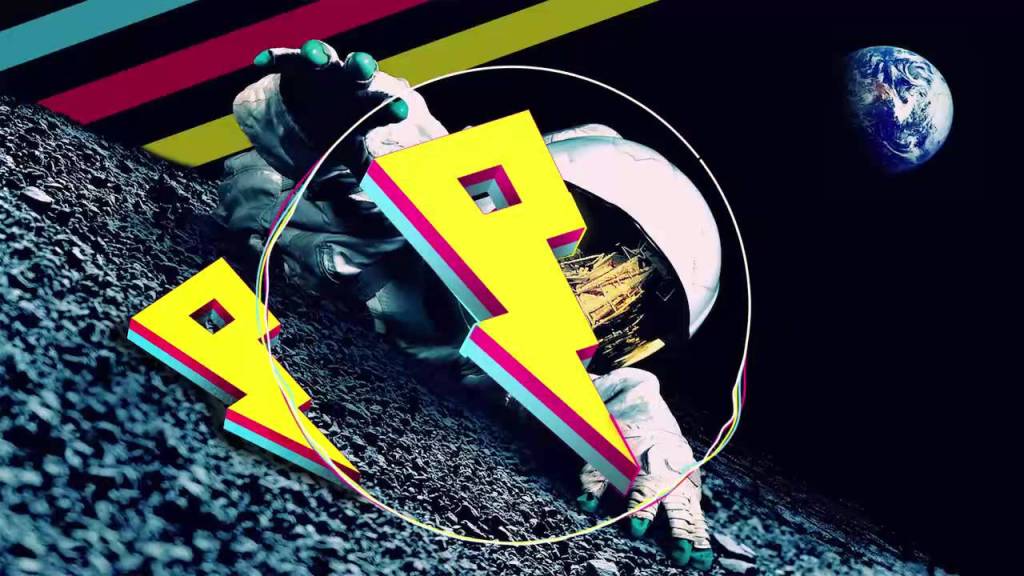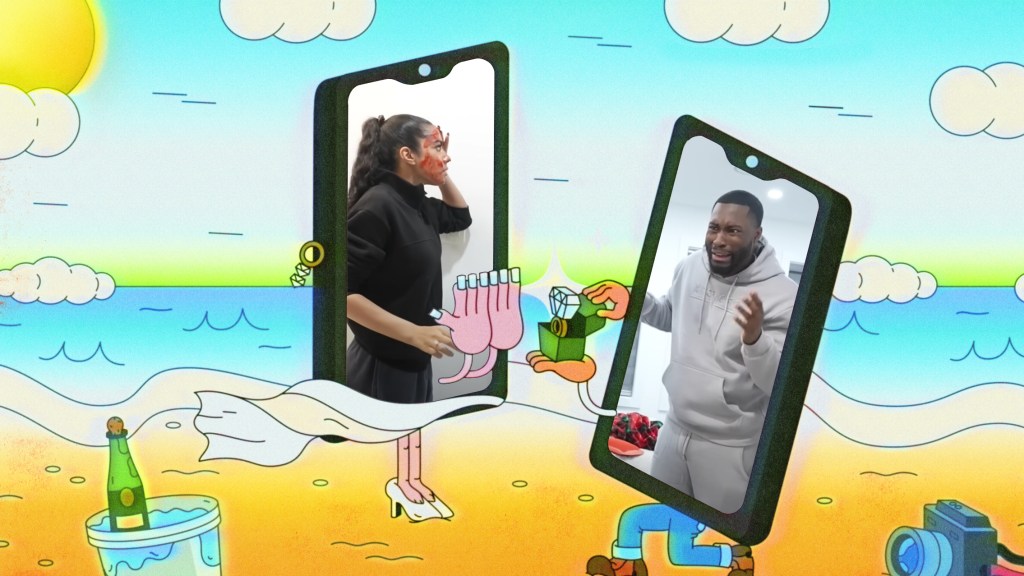Before the ubiquity of music streaming services like Apple Music and Spotify, the easiest way to stream a song was on YouTube. In 2009, Luke Hood, a college student in the UK at the time, created the YouTube channels UKF Dubstep and UKF Drum and Bass, uploading songs just at the moment when dubstep was crashing into the British music mainstream. “Rather than sending [music files], which was very slow,” says Hood, “you could upload [the files] to YouTube and suddenly you had a link you could paste to your friend.”
Across the Atlantic Ocean in Vancouver, Canada, the digital-only label Monstercat, founded in 2011, expanded upon Hood’s idea, using YouTube as its primary portal for promoting their own artists. Eventually, Monstercat grew into a fully-formed label, working with artists artists like Marshmello, Slushii, and Krewella. Alongside Hood’s UKF Dubstep and UKF Drum and Bass, Monstercat offered a model for aspiring YouTube music channels to follow.
Videos by VICE
By the mid-2010s, the YouTube music channel marketplace was filled by key players like Proximity (4.9 million followers), Mr. SuicideSheep (6.7 million), Trap Nation (14.2 million), and dozens of others with hundreds of thousands of followers. As these channels reached a level of mass scale, they started to wield significant influence—it proved easier to persuade radio DJs to play songs that had “blown up” on YouTube. In 2011, for example, Flux Pavilion’s “Bass Cannon” and Modestep’s “Feel Good” found success on the UK’s Radio 1 in part because the tracks were already popular on the UKF Dubstep channel.
Soon, major labels began catching on to how these channels provided a great platform for promotion, and started to work more closely with these creators.
“Interscope was the first label I worked with when I hit 70,000 subscribers,” says Blake Coppelman, who in 2012 founded the channel Proximity. Last year, Proximity created an official lyric video for DJ Snake’s Justin Bieber collaboration “Let Me Love You,” which still stands as the channel’s most popular video with over 400 million views.
Today, many top electronic YouTube channels work hand-in-hand with major labels, artists, and managers to promote tracks. Still, there are sometimes bumps in the road—in 2015, the channel Majestic Casual was briefly shut down over copyright violations.
To get a better sense of the origins—and future—of these hugely popular YouTube channels, THUMP spoke with Luke Hood of UKF, Blake Coppelman of Proximity, Gereon of Cloudkid, Gibran of Mr. SuicideSheep, and Iskander of La Belle Musique.
THUMP: What first inspired your YouTube channel?
Gibran (Mr. SuicideSheep): When I first started there were hardly any “music promotion” channels on YouTube. The only notable ones I can think of were UKF and Liquicity.
Gereon (Cloudkid): There were several other channels that I looked up to when I first got into the electronic music scene. I loved what they were doing: building a platform for artists to share their music with the world. However, there was no channel out there that appealed to what I enjoyed, especially regarding the audiovisual aspect.
Blake Coppelman (Proximity): I used to make my own mash-ups and every blog I submitted to would reject them, so I had no way to kind of sharing my music. Initially I was uploading my songs to YouTube, because I didn’t know how to make a website and sending MP3s wasn’t really efficient, so I would upload music to YouTube to show my friends cause they couldn’t find it elsewhere.
What goes into your process for selection songs?
Gereon (Cloudkid): I upload what I truly believe in. A track has to strike me, be unique and emotionally touch me. I don’t care about big names, artists followers or crazy production quality. If I hear a track and it resonates with me on some level, I will upload it.
Gibran (Mr. SuicideSheep): When I first started it basically involved finding a song that I enjoyed by browsing SoundCloud, digital retailers and blogs, and then getting permission for it. Now I get so much music sent over on a daily basis that I hardly have any time to search on my own.
Luke Hood (UKF Drum & Bass/Dubstep): Beatport used to be a big one back in the day for new releases, or Juno. But now, when you have all these relationships with PR companies, record labels, artists, and friends, your Facebook inbox is unreadable. You want to listen to their music and get back to them, but they’re sending you five demos and they’re like, “What do you think of this? Is this something you can run?” And suddenly you’re being very reactive rather than proactive in finding the music, which is not a bad thing, but is the nature of becoming more established.
Blake Coppelman (Proximity): It’s purely songs I like. No matter how big the artist is, it’s always about the song. For example, Galantis is one of the biggest artists and I always post their music, but one of their recent singles didn’t resonate with me until later on and it was too late, I initially said no. It’s always the music cause that’ll carry a song farther than the name of an artist.
When did you start to notice growth with the channel?
Iskander (La Belle Musique): When we have created our channel in 2013, that was the middle of summer, in one month we got 20,000 subscribers. We were like, “wow.” But we didn’t know anything about copyright and YouTube rights so after one week more our channel was down—three copyright strikes. Immediately we started new one, but we were still getting subs very fast. We realised that people like our sound so we started to upload two or three songs a day.
Gereon (Cloudkid): When I started the channel I uploaded whenever I found a great track—usually once every one or two weeks—and at some point I had a break of a couple months with no upload at all, but traffic was still happening. I realised that what I was doing was actually interesting people and driving traffic to the music I was uploading.
Did you have an idea of the type of sound and style you wanted for the channel?
Iskander (La Belle Musique): From the beginning of La Belle Musique we didn’t know exactly what we want to see on our channel. But the music industry is moving forward and every year we see how new artists and new genres are appearing. But today people want to hear the old La Belle Musique with chill and deep sounds.
Gereon (Cloudkid): My channel is not defined by a specific genre. I would say there is a base style or vibe that I stick to, but there is not a genre I could define my channel by. Since day one I have built the channel to work this way. I never wanted to limit myself to one type of sound or genre, but to be able to adjust and move. I love trying out weird, strange and unique sounds that you wouldn’t expect but that still fit to the base vibe of the channel.
Gibran (Mr. SuicideSheep): There’s never been a clear direction I’ve wanted to take the channel towards. I started out by primarily uploading drum & bass with the occasional dubstep or progressive house track. Over the years it’s constantly shifted to whatever my taste has been. There’s definitely been different phases where one genre is more prevalent on the channel than others, but it’s always been quite a mix of different music.
What are the plans for the future and looking beyond YouTube?
Gereon (Cloudkid): Since day one my goal has been to build a platform for artists to share their music with the world. I have now realised that even if an upload helps an artist quite a lot, it is nowhere near to what I want to offer. My next step has been to build a label around the YouTube channel and help artists not only with an upload, but offer them the full label package to take their music to the next level.
Blake Coppelman (Proximity): Short term goal is the label. I’m in talk with a few labels under an imprint and doing what I do curation wise but helping artists on a larger level. I think end goal, how I describe Proximity is like a lifestyle brand, but more like Red Bull, where how Red Bull was an energy drink but it was able to expand into music and sports, I want to go outside of music and go into creating original content or series around electronic music and maybe even beyond that. I just don’t want there to be a ceiling of where I could take this brand to without diluting it.
Luke Hood (UKF Drum & Bass/Dubstep): I think the YouTube has always been the base and hub, but building real world connection with your fans has always been what I loved doing more, rather than just sitting and doing the online stuff. Obviously it’s really important, but it’s the top of the funnel in how people discover UKF. People recognize UKF from the YouTube videos, but it means when they see it at a festival stage, at an event or an album, it becomes a seal of approval.




